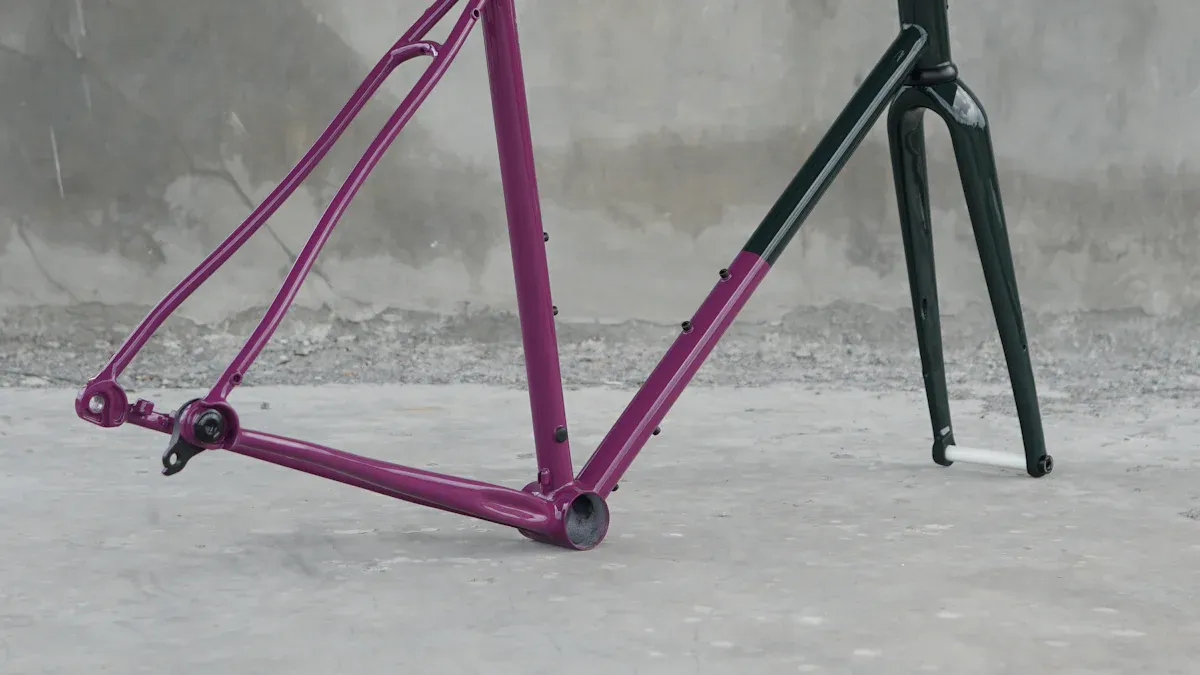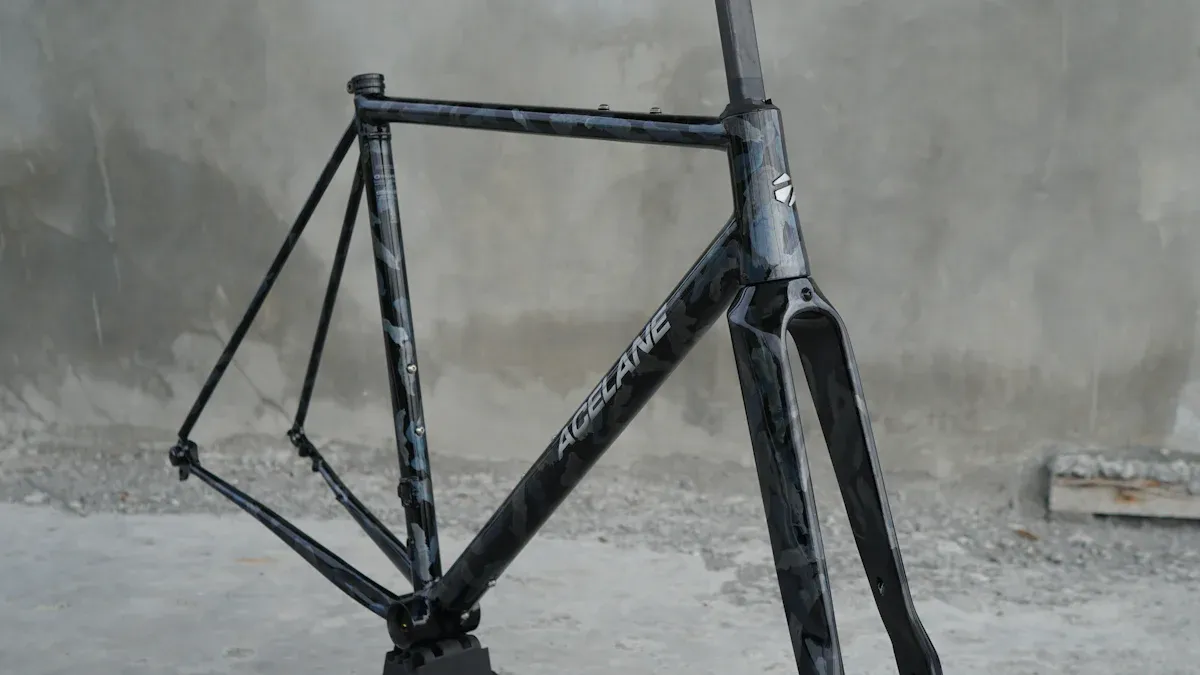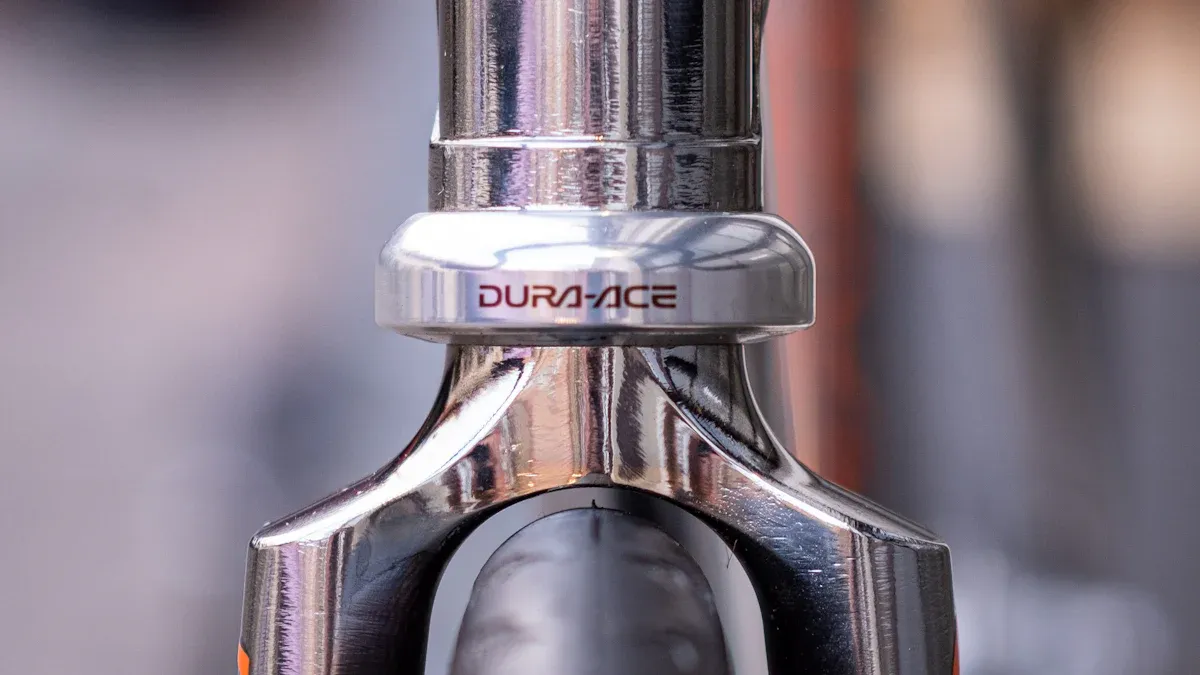
Choosing the right steel tube for bike frames is very important. It affects how well your bike works and how comfortable you feel while riding. Here are some key things to think about:
Weight: Lighter tubes are easier to handle.
Stiffness: Stiffer tubes help with power transfer.
Riding Style: Different styles need different tube features.
Recent studies show that choosing steel tubes for bike frames impacts strength, stiffness, weight, and shock absorption. Stronger steel lets you have thinner walls. This reduces weight without losing performance. You can enjoy a smoother ride that fits your needs.

Key Takeaways
Choosing the right steel tube affects your bike’s performance and comfort. Consider weight, stiffness, and your riding style.
Butted steel tubing offers a lighter frame with better ride quality. It is ideal for long rides and enhances comfort.
Chromoly steel is strong and flexible, making it a great choice for mountain biking. It absorbs shocks well on rough trails.
Test different bike frames to find the best fit for you. Pay attention to how each bike feels during your ride.
Consult experts or experienced cyclists for advice. Their insights can help you make a smarter choice for your bike frame.
Types of Steel Tubes for Bike Frames

Choosing the right steel tube for bike frames is very important. You need to know the different types available. Each type has special features that can change how you ride.
Common Steel Alloys
Steel tubes come in many alloys. Each one has its own benefits. Here’s a quick look at some common types:
Type of Steel Tube | Description | Typical Applications |
|---|---|---|
Has the same outer diameter but different wall thickness, often double or triple-butted. | Used in many bike frames for better strength and lighter weight. | |
Chrome Molybdenum (Chromoly) | A well-known quality steel that is responsive and comfortable. | Often used in high-performance bike frames. |
Alloys from Suppliers | Includes materials from Columbus, Tange, and True Temper. | Used in many bike frames for their special features. |
Butted steel tubing is liked for being lighter without losing strength. This tubing has thicker ends and thinner parts in the middle. This design helps make your ride more comfortable. On the other hand, chrome molybdenum, or chromoly, is great for its strong yet flexible nature. This makes it a favorite for serious cyclists.
Butted vs. Straight Tubes
Now, let’s look at the differences between butted and straight tubes.
Butted tubes improve ride quality. They are flexible and absorb vibrations better, giving you a smoother ride. Straight-gauge tubes have the same thickness all over. They are strong, but this can make them stiffer, which may not work for everyone.
Here’s a quick comparison of the two:
Type of Tube | Advantages | Disadvantages |
|---|---|---|
Butted Steel Tubes | Better strength-to-weight ratio, improved ride quality, more durable | May be less stiff than straight tubes |
Straight Steel Tubes | Stiffer and stronger because of uniform thickness | Heavier, which might not be good for all riders |
Butted tubes use less material in low-stress areas. This makes them lighter and improves ride quality. This is great for long rides where comfort matters. On the other hand, straight gauge tubes can feel stronger, which some riders like for aggressive riding styles.
Popular Tubesets
When you pick steel tubes for your bike frame, two names come up a lot: Reynolds and Columbus. Both brands have a long history. They make high-quality tubesets for different cycling needs.
Reynolds Tubing
Reynolds has been important in cycling for many years. They make different types of tubing for specific uses. Here’s a quick look at some of their popular types:
Tubing Type | Weight (approx.) | Applications |
|---|---|---|
Reynolds 501 | General use | |
Reynolds 531 | 6 to 3.8 pounds | Touring and racing |
Reynolds 853 | Under 3 pounds 5 ounces | High-end road bikes, custom frames |
Reynolds tubing is strong enough to have thinner walls. This helps make the bike lighter. It is great for long rides because it makes you more comfortable and less tired. You will also feel more stiffness and power because of the thinner walls. If you want a high-quality tubeset, Reynolds is a good choice.
Columbus Tubing
Columbus is another well-known name in bike frames. They have different tubesets for various cycling styles. Here’s a look at some of their popular options:
Tubeset | Composition | Ride Quality | Intended Use |
|---|---|---|---|
Columbus SL | Butted premium race set | Similar to other high-quality steel | Racing |
Lighter, thinner, smaller butted sections | At least as strong as SL | Competitive racing | |
Columbus SPX | Heavier version of SLX | Similar ride quality to SLX | Heavy riders, Classics |
Columbus tubing has special materials and methods that improve ride quality. For example, the SLX tubeset has helical reinforcing spirals. These make it strong while keeping it light. This is a great choice for competitive riders who want both performance and comfort.
Both Reynolds and Columbus have great options for bike frames. Depending on how you ride and what you like, you can find a tubeset that fits your needs perfectly.
Key Characteristics of Steel Tubes

When you choose a steel tube for bike frames, think about some key traits. These traits affect how well your bike works and how long it lasts. Two main factors are weight and stiffness, along with the tube diameter.
Weight and Stiffness
Weight is very important for your bike’s performance. Lighter tubes make your bike easier to ride and speed up. But don’t give up stiffness just to save weight. Stiffness helps with power transfer. It lets you push harder on the pedals without losing energy to bending in the frame.
Durability: Steel is very strong. It can handle cycling well without getting tired easily.
Low Maintenance: Steel needs little care, making it a smart choice for many riders.
Versatility: Steel tubes can be made in different shapes and sizes. This allows for custom designs that fit your riding style.
You might see that high-performance tubesets often use butted steel tubing. This tubing has different wall thicknesses. This helps cut down weight while keeping strength. The result is a “spring-y” feel that many cyclists like. This “lively” feeling makes your ride better, especially on long trips.
Diameter Considerations
The diameter of your steel tubes also affects the bike’s stiffness. Bigger diameter tubes make the frame stiffer. This is good for power transfer during tough rides. Here are some key points to think about:
Round chainstays are better than oval ones for more stiffness.
Short chainstays and larger diameter seat stays help the frame stay strong.
A big headtube is important for increasing stiffness.
You can often tell how stiff a touring frame is by its tube diameters.
While not exact, the stiffest frames usually use the largest-diameter tubing.
When you balance the diameter and wall thickness, you can get the ride quality you want. Thicker walls make the bike stiffer, which helps with power but can make the ride rougher. On the other hand, thinner walls give a more comfortable ride but may not last as long. Finding the right balance is key for your riding needs.
Matching Tubes to Riding Style
Picking the right steel tube for bike frames depends on how you ride. Each riding style has different needs. Knowing these can help you choose the best option.
Road Cycling
For road cycling, you want a frame that is light and stiff. Here are some things to think about:
Intended Use: Steel frames are great for long rides. They are strong and comfortable, making them good for touring.
Material Properties: Steel gives a soft ride. It reduces bumps from the road, making long rides more comfortable.
Frame Geometry: The shape of the frame affects how it handles. A good design will make your ride better.
When picking tubes for road cycling, choose butted steel tubing. This type makes a lighter frame while keeping it strong. You’ll enjoy a better ride, especially on long trips.
Mountain Biking
Mountain biking needs a strong and flexible frame. You want a bike that can handle rough paths and still be comfortable. Here’s what to remember:
Durability: Pick thicker butted tubes. They can take hits from rocky trails.
Flexibility: A little flex in the frame helps absorb bumps. This makes your ride smoother.
Weight: You want a strong frame, but keeping it light helps when climbing and turning.
For mountain biking, think about using chromoly steel. Its strength and flexibility are popular with serious riders.
Commuting
If you’re commuting, comfort and usefulness are important. Here’s how to choose:
Comfort: Look for butted tubes that give a smooth ride. This is nice on bumpy city streets.
Weight: A lighter frame is easier to carry up stairs or onto buses.
Versatility: Steel can be shaped in many ways. This lets you add things like racks or fenders easily.
Practical Tips for Selection
Testing and Feel
When you pick steel tubes for bike frames, trying them out is the best way. If you can, ride a few bikes with different tube types. Notice how each bike feels while you ride. Here are some tips to help you check:
Ride Quality: See how the bike handles bumps. A good frame should feel nice, especially on long rides.
Stiffness: Check how the bike reacts when you push on the pedals. You want a frame that uses your energy well without being too stiff.
Don’t forget to check how the bike fits you. A bike that fits well makes your ride better and helps you perform well.
Consulting Experts
Don’t be shy about asking professionals or experienced cyclists for help. They can share useful advice from their own experiences. Here are some ways to get expert tips:
Local Bike Shops: Workers at bike shops usually know a lot about different steel tubes. They can suggest the best choices for you.
Online Forums: Join cycling forums or social media groups. Talking with other cyclists can help you learn from what they did right or wrong.
Also, watch out for common mistakes when choosing steel tubes. For example, forgetting to treat the inside can cause rust over time. Regular care, like using Framesaver every year, is very important, especially in tough conditions. Make sure to treat weak spots, like the bottom bracket and chainstays, to make your frame last longer.
By trying different options and asking experts, you’ll make a smarter choice that fits your riding style and likes.
Choosing the right steel tube for bike frames is all about you and your riding style. Remember to think about the type of steel and its properties, like yield strength. Higher yield strength helps with ride quality, while double-butted tubing gives you a lighter frame without losing strength. Take your time to explore different options and ride a few bikes. Don’t hesitate to ask for advice from experts or fellow cyclists. Your comfort and performance depend on making the right choice!
FAQ
What is the difference between butted and straight tubes?
Butted tubes have different wall thicknesses. This makes them lighter and more comfy. Straight tubes have the same thickness all over. They are stiffer but can be heavier. Pick based on how you ride and what feels good.
How do I know which steel alloy is best for me?
Think about how you ride. Chromoly is great for performance and flexibility. Butted steel gives a good mix of weight and strength. Try different types to find what feels best for you.
Can I use steel tubes for mountain biking?
Yes! Steel tubes are strong and can absorb shocks well. Look for thicker butted tubes or chromoly for extra strength and flexibility on rough trails.
How do I maintain my steel bike frame?
Check for rust often. Treat weak spots with protective coatings. Clean your bike after rides, especially when it’s wet, to keep it in good shape.
Is weight the most important factor in choosing steel tubes?
Weight is important, but don’t forget about stiffness and comfort. A lighter frame can help performance, but a stiffer frame helps with power transfer. Balance these things based on how you ride.
See Also
Understanding The Differences Between Bike Frame Materials
Selecting The Perfect Bike Frame To Suit Your Requirements
Essential Tips For Caring For Your Steel Bike Frame
